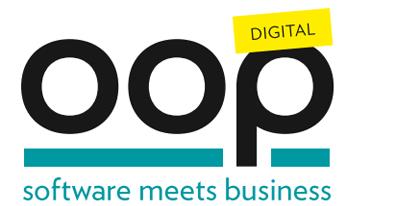
CONFERENCE PROGRAM OF 2021
Please note:
On this site, there is only displayed the English speaking sessions of the OOP 2021 Digital. You can find all conference sessions, including the German speaking ones, here.
Thema: Microservices
- Montag
08.02. - Dienstag
09.02. - Mittwoch
10.02. - Donnerstag
11.02. - Freitag
12.02.
Applications, services, and systems are changing out of necessity because of the kinds of platforms that are available today: distributed and multi-core. Have you been curious about Reactive Architecture and Programming but haven't had time to dig in? Join this session.
Maximum number of participants: 75
Target Audience: Architects and Developers
Prerequisites: Java Programming
Level: Advanced
Extended Abstract:
Applications, services, and systems are changing out of necessity because of the kinds…
Given an ancient codebase that makes refactoring risky and expensive, how do you clear a path to continued delivery? The old wisdom says the best time to plant a tree was 20 years ago. The next best time to preserve your software investment is today: plant a Strangler, a pattern for reaping continuous value from your existing system while growing new functionality alongside it.
We'll test-drive new features into a real legacy system. You'll leave with a powerful strategy for extending the useful…
SOLID principles are well-known for designing object-oriented systems. But what if you are developing microservices? IDEALS, is yet another silly mnemonic acronym and are the core principles for microservice design. The acronym stands for: Interface segregation, Deployability, Event-driven, Availability over consistency, Low Coupling, and Single responsibility. We will relate these IDEALS to techniques, tools, technologies, and domain modeling principles we use today to develop modern…
Apache Kafka became the de facto standard for microservice architectures. Decoupled applications and Domain-driven Design (DDD) are key benefits. However, that also introduces new challenges like observability of the whole ecosystem. This session explores the problems of distributed Microservices communication and how Kafka, Kubernetes and a Service Mesh like Istio address them. Learn some approaches for combining them to build a reliable and scalable microservice architecture with decoupled and…
This talk will examine principles that assist with successfully evolving from a monolith to Microservices. Deciding what to decouple along with when and how to incrementally evolve a system are the main architectural challenges in this process. It is important to commit to "stop adding to the monolith" - all new code is added as microservices; the "Strangler Pattern". The new features are microservices, occasionally replacing part of the monolith. Also, when writing new microservices code, it is…
Raiffeisen Bank International (RBI) started in 2017 with “Group Digital Solutions” a journey in order not to oversleep the digitization of the banking industry.
Due to new approaches such as DevSecOps & Continuous Testing, the topic of software tests, whether manual or automated, had to be completely redesigned and implemented.
This talk gives insights into the test strategy & the fullstack test automation architecture that were used.
Target audience: testers, developers, architects, managers
…
Over the history of software systems, the way we build such artifacts, the way we design them, the way we express them have evolved in seemingly disruptive ways. Even today, the pendulum swings between low ceremony agile methods to more rigid waterfall-ish ones; from big balls of mud to microservices and then back to big balls of microservices. In this talk, we'll examine the past, the present, and the future of software architecture: the role it plays in software systems, and the timeless…
DevOps as a software engineering practice unifies software development (Dev) and software operation (Ops). To assist with quality delivery in with DevOps you need to provide a “Quality Delivery Pipeline” to assure the delivery meets the requirements and proper validation and checks are done before releasing into full production. This talk will focus on the “Quality Delivery Pipeline” as a practice that can help sustain delivering with confidence by addressing important qualities in the pipeline.
…
There is an industry trend where businesses are moving towards autonomous product teams. These teams aim to be end-to-end responsible for the product they are building and maintaining. To achieve end-to-end team autonomy, companies move towards a microservices architecture to successfully inspect and adapt. However, to be successful organisations need to have the correct boundaries for the microservices. Using the bounded context pattern from Domain-Driven Design it is possible to achieve team…
